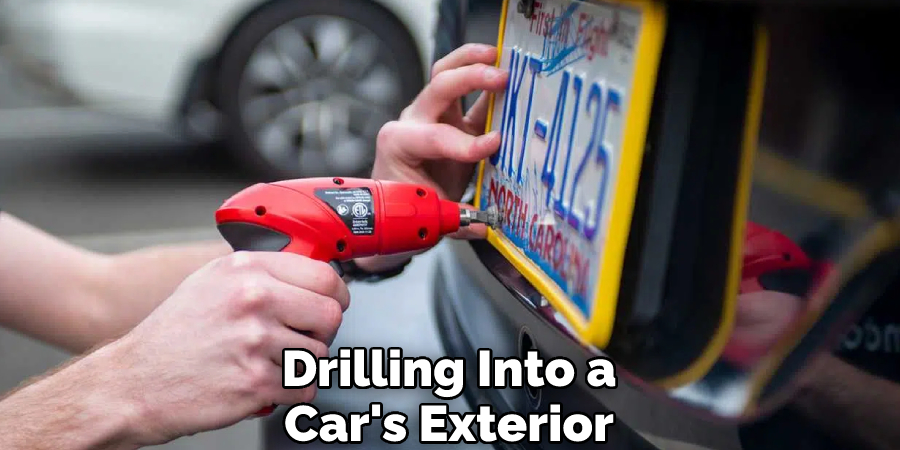When you get a new car or when an old car gets a new license plate, the holes from the previous plate are often left exposed. This can be an eyesore and detract from the overall look of your vehicle. Fortunately, there are some easy ways to fix these holes so that you can restore your vehicle’s sleek appearance.
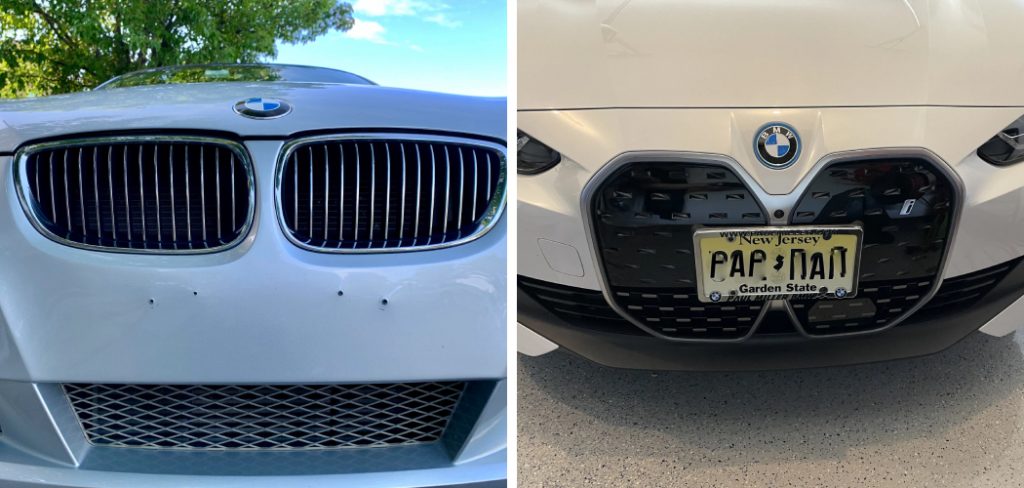
The main advantage of Fixing Front License Plate Holes is that it can help you save time, money, and effort in the long run.
When the license plate is properly fixed, it can also give your car a neat and tidy look. This method helps prevent future problems arising from having an improperly installed license plate and helps ensure your vehicle does not fail safety inspections. You can find step-by-step instructions on how to fix front license plate holes in this blog article.
Materials You Will Need
- Screwdriver
- Twine
- Epoxy adhesive
- Sandpaper
- Putty knife
- Painter’s Tape
- Soft cloth or sponge
- Small paintbrush
- Automotive primer and touch-up paint
- Plastic plugs (optional)
Step-by-step Instructions for How to Fix Front License Plate Holes
Step 1: Inspect the Space
Look at the space that currently holds the license plate. Check for signs of rust, corrosion, and other damage. If any damage is present, clean it out with a rag or steel wool before continuing to the next step. You will need some basic supplies, including a tube of high-strength epoxy, sandpaper, a drill, and screws.
Step 2: Prepare the Hole
With a drill, widen the existing holes to accommodate new screws. Then sand down any rough edges or corrosion with sandpaper. Use a rag to clean off any dust that may have been created during this process. Mix up the epoxy according to its instructions, then use it to fill the holes. You will want to ensure that the hole is completely filled with an even layer of epoxy. Allow it to dry for several hours before continuing on to Step 4.
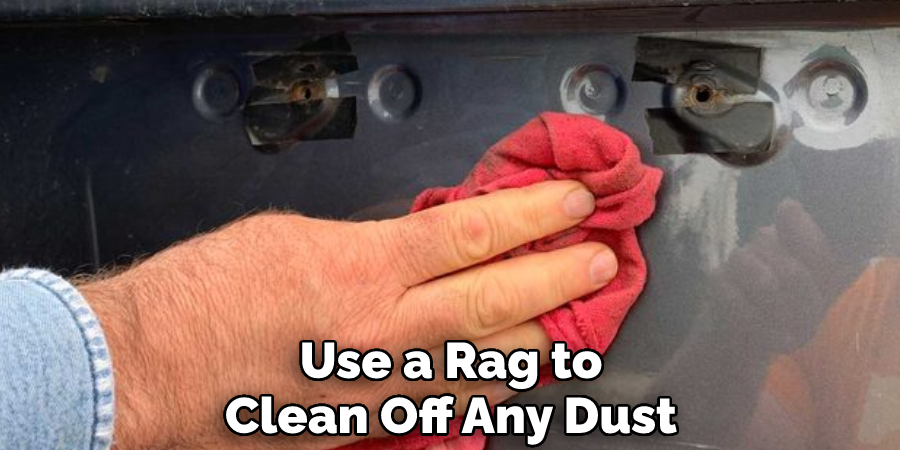
Step 3: Measure for Proper Screw Fitment
Using a measuring tape, measure the distance between the two holes you have filled in. This will help determine what size screws are needed to affix your license plate to your car properly. Using a drill and a bit that is slightly smaller than the diameter of your screws, carefully drill two pilot holes into the epoxy.
Step 4: Thread New Screws Through License Plate and Into the Pilot Holes
Taking care not to over-tighten, thread your screws through the license plate and into the pilot holes. This will help ensure that the plate is securely attached to your car. Using a screwdriver, carefully tighten each of the screws until they are snugly in place. Take care not to over-tighten them, as this could cause damage to your car or license plate.
Step 5: Put on Finishing Touches
If desired, you can use a dab of epoxy around the screws to ensure they are extra secure. Carefully place your license plate in the space that it was originally in. Make sure it is evenly placed and not crooked. Once you have placed your license plate in its rightful spot, give it a few gentle tugs to ensure that it is securely attached and not going anywhere.
Safety Tips for How to Fix Front License Plate Holes
- Wear safety goggles to protect your eyes when using power tools or to work with sharp objects.
- Ensure the area is well-ventilated and no fumes are inhaled when using any chemical compounds for repair work.
- When drilling into a car’s exterior, use a cordless drill to reduce the risk of sparks igniting volatile substances.
- Before beginning repairs, use sandpaper to remove any rust or paint around the damaged area.
- Make sure that all metal surfaces are clean and free from dirt, grease, and other contaminants before using them in the repair process.
- Take extra care when using power tools, such as a drill, to avoid damaging other vehicle parts.
- When using materials like epoxy or putty for repairs, make sure to spread it evenly over the affected area and let it dry completely before installing the license plate.
- After finishing the repair process, test each part of the installation to ensure that the license plate is securely and properly attached.
Following these safety tips can help repair front license plate holes successfully. Once the repairs are complete, you’ll be able to display your license plate again proudly.
How Can You Prevent Future Holes and Other Damage Caused by a Front License Plate?
- Install Plateless Spacers: The most effective way to fix front license plate holes is to install plateless spacers, also known as ‘bumper brackets’. This type of spacer will create a gap between the front bumper and the license plate, preventing it from rubbing against the paintwork and causing damage.
- Install a Cover Plate: If you do not want to install a plateless spacer, you can also opt for a cover plate. This bracket will attach to the bottom mount holes and protect the paint from further damage.
- Use Adhesive Tape: For minor damage caused by front license plates, you can use strong adhesive tape to cover the holes. This will prevent any dirt from entering and causing corrosion inside the bumper.
- Invest in Regular Maintenance: To prevent any further damage caused by front license plates, it is important to invest in regular maintenance for your vehicle. Inspecting the paintwork around the plate frequently and ensuring that it is free from any dirt or debris can help you to avoid further holes.
- Select a Front License Plate That Is Compatible with Your Vehicle: To prevent future license plate damage, it is important to ensure that your vehicle has a front license plate that is compatible with the model of your car. Some models may require different types of mounting brackets to secure the plate, which could lead to further damage if it is not attached properly.
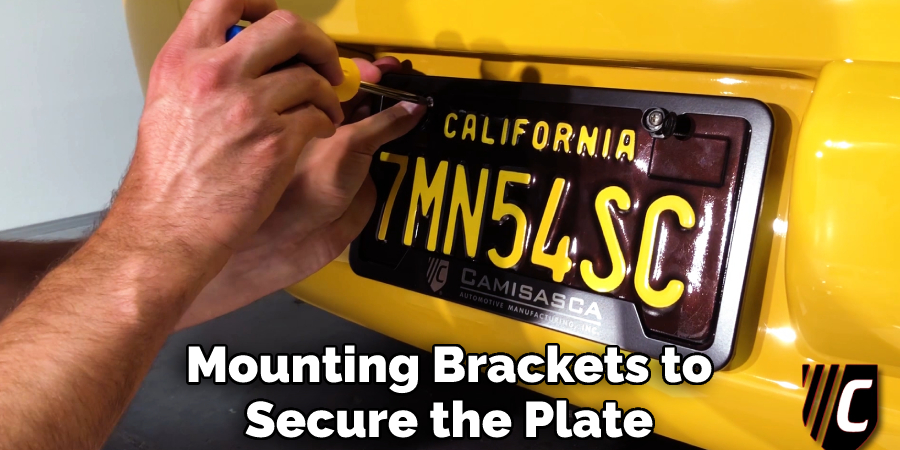
By following these steps, you can help to prevent any future holes and other damages caused by a front license plate. Investing in regular maintenance and ensuring that your vehicle has a compatible front license plate will go a long way in preserving the paintwork and keeping your car looking good.
How Can You Protect Your Car From Future Damage Caused by a Front License Plate?
- Invest in a front license plate bracket or frame that comes pre-drilled with holes, so you don’t have to drill any yourself.
- If your existing holes are too big for the new bracket, use plastic body filler, such as Bondo™, to fill them in and create a level surface.
- Once the filler is dry, sand it down with fine-grit sandpaper and prime it before painting the filled area.
- Install your new bracket according to its instructions, making sure all screws are securely tightened.
- To protect your car’s finish, invest in a protective film or wrap that is applied directly to the car’s surface. This will help protect against further damage from weather and debris.
- Finally, if you want additional protection for your license plate holes, use plastic caps over them to keep moisture out.
- Inspect your front license plate regularly to ensure it is securely attached and doesn’t cause any damage to your car.
By following the above steps, you can easily fix front license plate holes on your vehicle while protecting it from further damage. Whether you are replacing a license plate, installing a new bracket, or just protecting your car’s finish, these steps can help keep your vehicle looking great for years to come.
Conclusion
The downside of fixing front license plate holes is that it can be a time-consuming and costly process. The first step is to remove the existing license plate, which must be unscrewed or pried off. If the screws have rusted, they may need to be cut with a pair of pliers. Then you will need to fill in the holes with a sealant or putty to prevent dirt and moisture from entering them. Finally, you will need to reattach the license plate using self-tapping screws that are designed for this purpose.
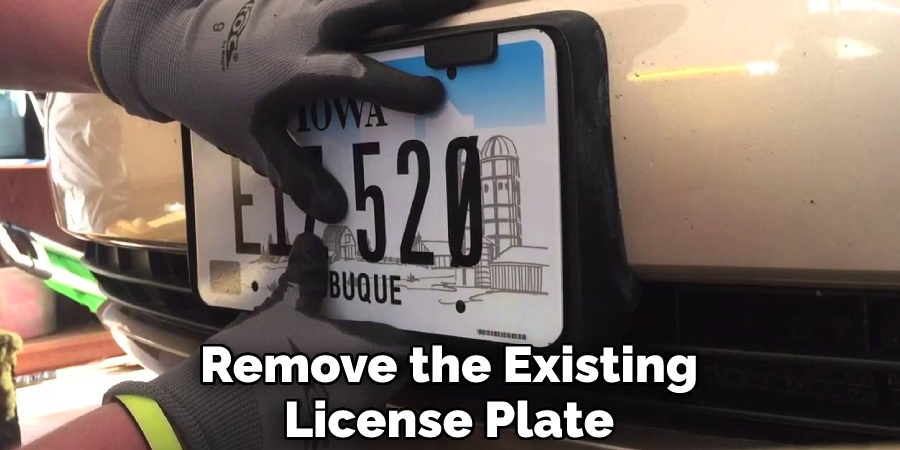
In conclusion, fixing front license plate holes is a relatively straightforward process if you use the right supplies and tools. It is important to ensure that you do this job properly and professionally, as any sloppy work could further damage your car’s body panels. Once the hole is filled, it can be sanded down to create a smooth finish. Then, primer and paint can be applied to match the existing color of your car. I hope reading this post has helped you learn how to fix front license plate holes. Make sure the safety precautions are carried out in the order listed.

